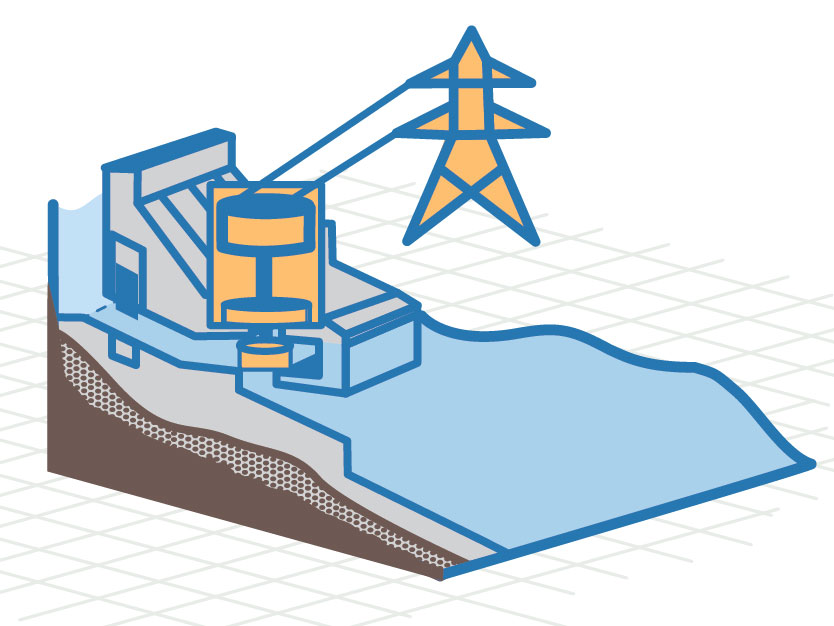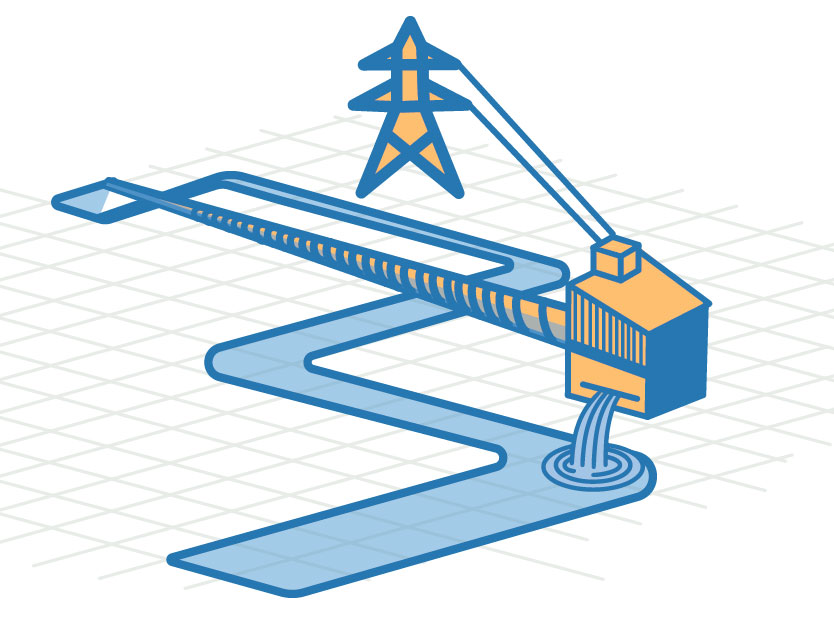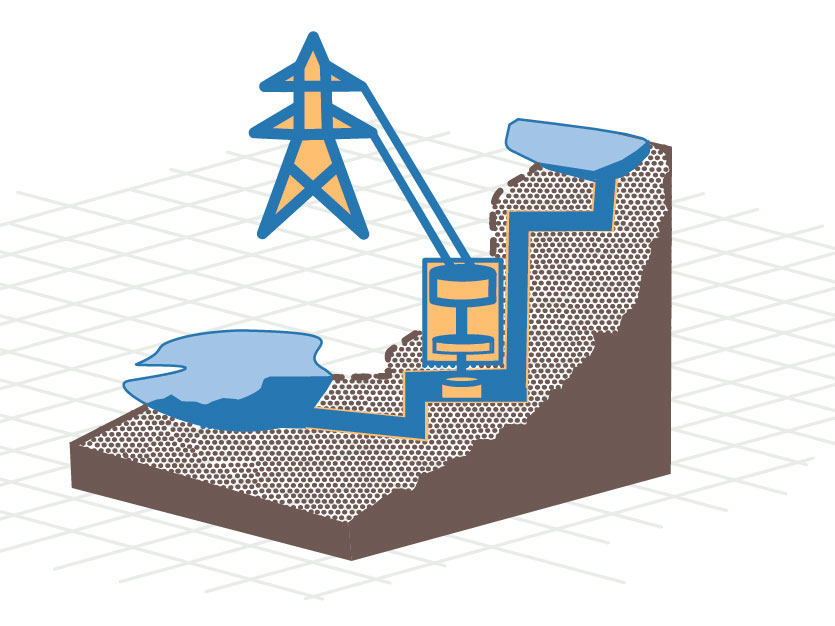Hydroelectric power is produced by converting kinetic energy from falling or fast flowing water into mechanical energy that is able to produce electricity via turbines and can be developed in a variety of sizes and scales.
Current hydroelectric facilities are typically developed by retrofitting existing non-powered dams or installing run-of-the-river turbine systems. Hydroelectric projects can be developed to offset community electric costs, provide power to a nearby industrial facility, or sold to utilities via a power purchase agreement. Hydroelectricity is one of the few renewable power sources that can provide a continuous supply of baseload electricity with some flexibility to be dispatched on demand as needed by the grid.
Types of Hydropower
-

Retrofitting Existing Hydroelectric Dams
A 2012 study by Oakridge National Lab determined that there are over 80,000 non-powered dams in the United States. Retrofitting these existing dams to produce electricity is an excellent way to develop hydropower resources. In these scenarios the dams already exist, and the environmental impacts of the dam constructed have already been incurred.
-

Diversion (Run-of-River)
Diversion hydroelectric channels a portion of a river through a canal or penstock. Typically Run-of-River facilities will not have any dams or water storage. Run-of-River hydroelectric projects can create sustainable energy while minimizing impacts to the surrounding environment and nearby communities.
-

Pumped Storage
Pumped storage hydroelectric is a configuration of two water reservoirs at different elevations that can generate power as water moves down to the lower reservoir through a turbine. The turbine draws power as it pumps water to the upper reservoir. Pumped storage hydroelectric can be an “open loop,” where the system is connected to a natural body of water, or a “closed loop,” where the reservoirs are not connected to an outside body of water. Pumped storage can provide energy-balancing, storage capacity, and ancillary grid services such as network frequency control and reserves.
What You Need
For hydropower projects to be viable for Tribes, the following characteristics and circumstances must generally be present:
- An existing dam or hydrologic site with a sufficient combination of water flow and hydraulic head, or change in elevation, for power generation.
- Water access and water rights. If the project requires diversion of water, water rights are needed to ensure that downstream users receive their proper allocation.
- A favorable regulatory framework allowing access to the electricity market and transmission for electric production and sale.
- Few environmental sensitivities. For example, not needing to account for fish passage or protected species.
Services for Hydropower
The Division of Energy and Mineral Development provides project assistance to Tribes and individuals to develop hydropower on their trust land. Learn more about how we can help below.
Additional Information
Additional Resources
Contact Us
Lakewood, CO 80401-3142


